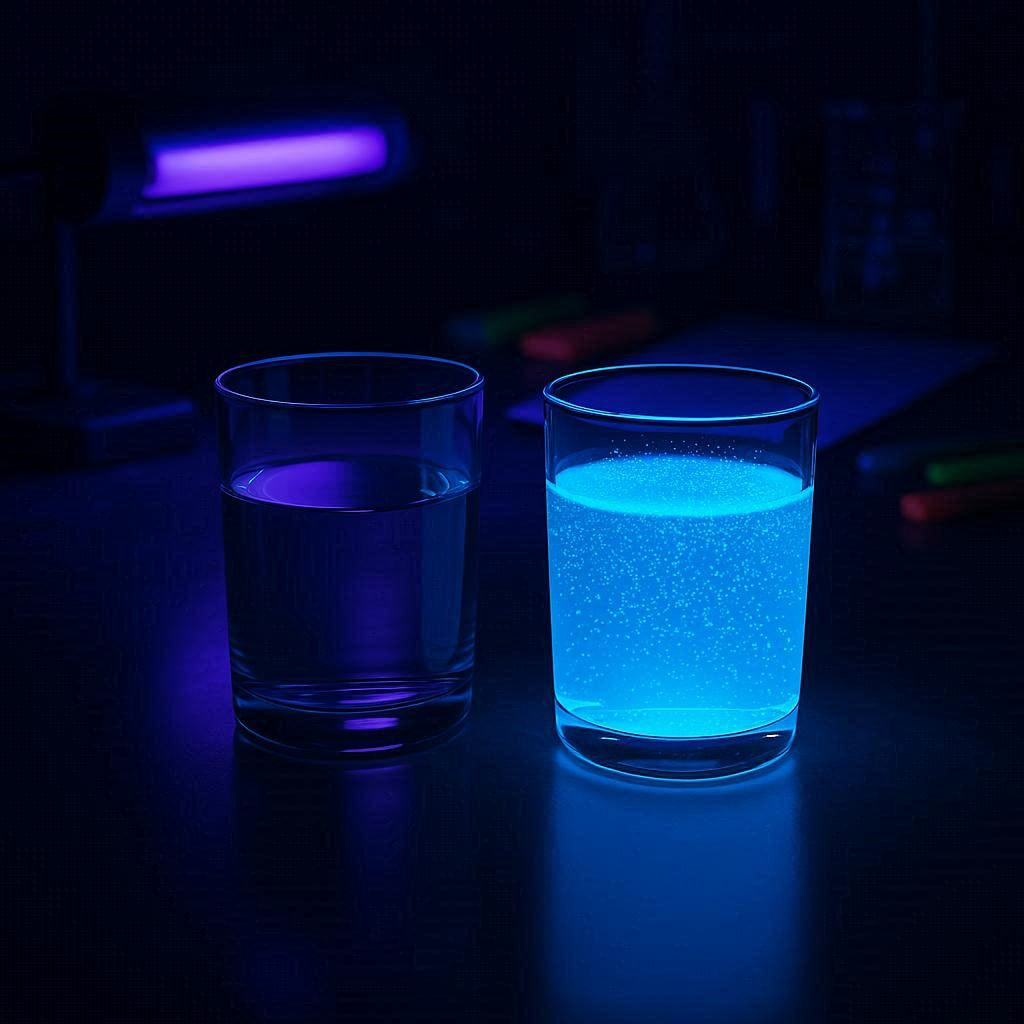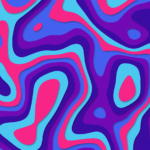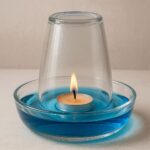The Glowing Tonic Water Experiment: Discovering Fluorescence with UV Light
Fluorescence is a fascinating phenomenon that has captivated scientists and laypeople alike for decades. It’s a process where a substance absorbs light at one wavelength and emits it at another, creating a glowing effect. While fluorescence is commonly observed in neon signs and certain types of paint, it can also be found in everyday items, such as tonic water. Yes, you read that right—tonic water! This blog post will guide you through a fun and educational experiment that uses tonic water and UV light to demonstrate the principles of fluorescence.
What You’ll Need
Before we dive into the experiment, let’s gather the necessary materials:
- Tonic water: This is the star of the show. Tonic water contains a compound called quinine, which is responsible for its fluorescent properties.
- UV light source: You can purchase a UV flashlight or black light online or at a hardware store.
- A clear glass or plastic container: A drinking glass or a small plastic cup will work perfectly.
- A dark room or dimly lit space: Fluorescence is best observed in low-light conditions.
- Optional: Food coloring or other fluorescent substances: If you want to experiment further, you can add a few drops of food coloring or other substances known to fluoresce under UV light.
Step-by-Step Instructions
Now that we have all the materials ready, let’s proceed with the experiment:
- Prepare the Setup: Begin by pouring tonic water into the clear glass or plastic container. The amount doesn’t have to be exact—just enough to fill the container about halfway.
- Dim the Lights: Fluorescence is more visible in the dark or in low-light environments. Turn off the lights in the room or wait until nighttime to conduct the experiment.
- Shine the UV Light: Once the room is dark, shine the UV light directly onto the tonic water. You should immediately notice a bright, glowing effect. The tonic water will emit a vibrant blue color, indicating the presence of quinine.
- Observe and Experiment: Take your time to observe the glowing effect. Move the UV light around to see how the light interacts with the tonic water. If you’ve added food coloring or other fluorescent substances, now is the time to observe any differences or changes in the glowing effect.
- Conduct Further Experiments: If you’re feeling curious, you can try altering the experiment by using different brands of tonic water, varying the concentration of quinine, or adding other substances to see how they affect the fluorescence.
The Science Behind the Glow
Now that we’ve conducted the experiment, let’s delve into the science that makes this phenomenon possible.
What is Fluorescence?
Fluorescence is a type of luminescence, which is the emission of light by a substance that is not caused by heating. Fluorescence occurs when a substance absorbs light at one wavelength (usually ultraviolet) and emits it at another wavelength (usually visible light). This process happens almost instantaneously and stops as soon as the light source is removed.
The Role of Quinine
Tonic water contains a naturally occurring compound called quinine, which is extracted from the bark of the cinchona tree. Quinine has been used for centuries to treat malaria and is also known for its fluorescent properties. When quinine is exposed to UV light, it absorbs the ultraviolet radiation and emits blue light, creating the glowing effect we observed in the experiment.
Why Tonic Water?
Tonic water is an ideal choice for this experiment because it’s readily available, inexpensive, and contains a sufficient amount of quinine to produce a noticeable fluorescent effect. Additionally, tonic water is safe to handle and consume, making it a great option for family-friendly science experiments.
Applications of Fluorescence
Fluorescence is not just a neat party trick; it has numerous practical applications in various fields:
- Medical Research: Fluorescent dyes are used to label and track cells, proteins, and other biological molecules in medical research. This helps scientists understand complex biological processes and develop new treatments.
- Forensic Science: Forensic experts use fluorescence to detect bodily fluids, such as blood and urine, at crime scenes. Certain substances in these fluids fluoresce under UV light, aiding in the collection of evidence.
- Quality Control: Fluorescence is used in the food and beverage industry to detect contaminants and ensure product safety. For example, certain types of bacteria and mold fluoresce under UV light, allowing inspectors to identify spoiled or contaminated products.
- Environmental Monitoring: Scientists use fluorescence to monitor water quality and detect harmful substances in the environment. For instance, oil spills can be detected using fluorescent dyes that bind to oil molecules.
Safety Tips and Precautions
While this experiment is relatively safe, there are a few precautions to keep in mind:
- UV Light Safety: Prolonged exposure to UV light can be harmful to your eyes and skin. Avoid shining the UV light directly into your eyes, and wear protective eyewear if you plan to conduct the experiment over an extended period.
- Allergic Reactions: Some people may be allergic to quinine or other ingredients in tonic water. If you or someone participating in the experiment experiences any adverse reactions, discontinue use immediately and consult a healthcare professional.
- Cleanliness: Always handle the materials with clean hands and ensure the container is free from contaminants to avoid any unwanted chemical reactions or bacterial growth.
Fun Facts and Variations
To make the experiment even more engaging, here are a few fun facts and variations you can try:
- Glowing Ice Cubes: Freeze tonic water in ice cube trays and add the glowing ice cubes to a glass of water or clear soda. Under UV light, the ice cubes will glow as they melt.
- Fluorescent Cocktails: If you’re of legal drinking age, you can create glowing cocktails by mixing tonic water with other fluorescent substances. For example, adding a splash of lemon-lime soda or a few drops of food coloring can enhance the effect.
- Homemade Fluorescent Solutions: Experiment with other household items that fluoresce under UV light, such as certain types of toothpaste, detergents, and cleaning products. Mix these substances with water to create your own fluorescent solutions.
Conclusion
In this blog post, we’ve explored the fascinating phenomenon of fluorescence using tonic water and UV light. Through a simple and fun experiment, we’ve gained a deeper understanding of how certain substances interact with light and the practical applications of fluorescence in various fields. Whether you’re a science enthusiast, a parent looking for educational activities, or simply someone curious about the world around you, this experiment offers a unique opportunity to engage with the natural sciences in a hands-on way.
So next time you crack open a bottle of tonic water, remember the hidden glow waiting to be revealed under the right light. Who knows? You might just uncover a new passion for the wonders of fluorescence!
Additional Resources
If you’re interested in learning more about fluorescence and other related phenomena, here are some recommended resources:
- Online Courses: Websites like Coursera and Khan Academy offer free and paid courses on fluorescence and other topics in chemistry and physics.
- Science Blogs: Websites like ScienceNews and Physics.org regularly feature articles on fluorescence and its applications in various fields.
- Laboratory Manuals: If you’re interested in conducting more advanced fluorescence experiments, you can find detailed instructions in laboratory manuals or scientific journals.
- Educational Videos: YouTube channels like Crash Course and SciShow offer engaging and informative videos on fluorescence and other scientific topics.
By exploring these resources, you can continue to expand your knowledge and conduct even more exciting science experiments at home or in the lab.
Final Thoughts
The glowing tonic water experiment is more than just a fun trick—it’s a gateway to understanding the fascinating world of fluorescence. With a little bit of curiosity and some basic materials, you can uncover the hidden light within everyday objects and gain a deeper appreciation for the science that surrounds us. So, the next time you’re in the kitchen or at the store, keep an eye out for other substances that might have fluorescent properties. You never know what you might discover!
Happy experimenting, and remember—science is all around us, waiting to be explored and enjoyed!



